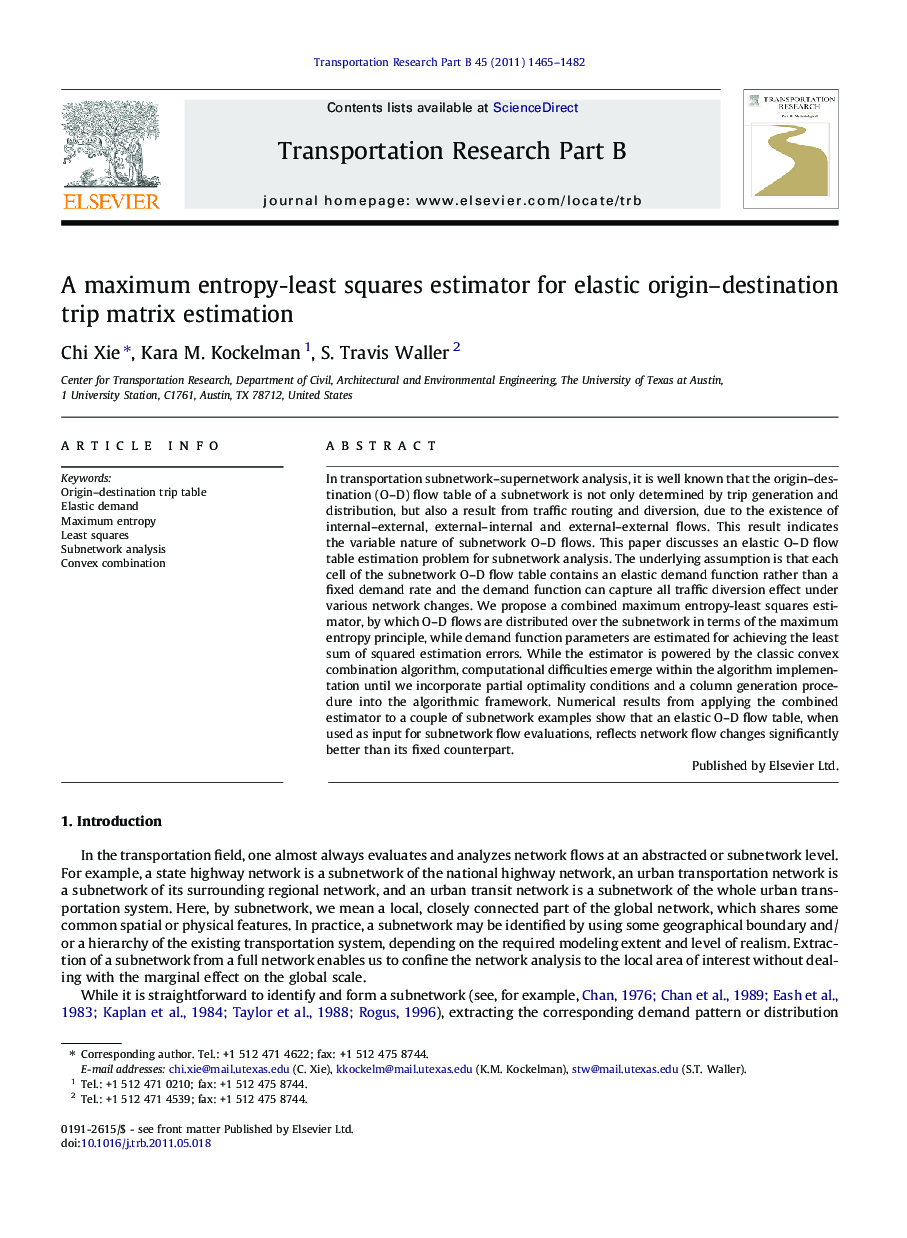| کد مقاله | کد نشریه | سال انتشار | مقاله انگلیسی | نسخه تمام متن |
|---|---|---|---|---|
| 1132550 | 955787 | 2011 | 18 صفحه PDF | دانلود رایگان |

In transportation subnetwork–supernetwork analysis, it is well known that the origin–destination (O–D) flow table of a subnetwork is not only determined by trip generation and distribution, but also a result from traffic routing and diversion, due to the existence of internal–external, external–internal and external–external flows. This result indicates the variable nature of subnetwork O–D flows. This paper discusses an elastic O–D flow table estimation problem for subnetwork analysis. The underlying assumption is that each cell of the subnetwork O–D flow table contains an elastic demand function rather than a fixed demand rate and the demand function can capture all traffic diversion effect under various network changes. We propose a combined maximum entropy-least squares estimator, by which O–D flows are distributed over the subnetwork in terms of the maximum entropy principle, while demand function parameters are estimated for achieving the least sum of squared estimation errors. While the estimator is powered by the classic convex combination algorithm, computational difficulties emerge within the algorithm implementation until we incorporate partial optimality conditions and a column generation procedure into the algorithmic framework. Numerical results from applying the combined estimator to a couple of subnetwork examples show that an elastic O–D flow table, when used as input for subnetwork flow evaluations, reflects network flow changes significantly better than its fixed counterpart.
► An elastic O–D trip matrix method is proposed for subnetwork flow analysis.
► A convex optimization model is proposed based on the maximum entropy and least squares principles.
► A Frank-Wolfe solution algorithm incorporating least-square optimality conditions and column generation is developed.
► Numerical results from synthetic and realistic examples indicate the superior performance of the elastic O–D trip approach.
Journal: Transportation Research Part B: Methodological - Volume 45, Issue 9, November 2011, Pages 1465–1482